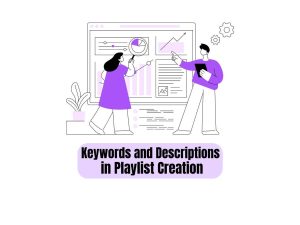Visual content is a crucial component of successful social media marketing. Whether you are sharing infographics, memes, photos, gifs, or videos, it’s essential to optimize your visual content for each social media platform to ensure the best user experience and engagement. This blog post will provide insights and tips on how to optimize your visual content across various social media platforms.
Understanding the Importance of Visual Content
Before diving into the tactical side of optimization, it’s important to highlight why visual content is so crucial for social media marketing. Visual content can:
Make your posts more engaging and shareable
Convey complex information quickly and effectively
Improve recall and understanding
Here’s How to Optimize Your Visual Content
1. Optimize for Different Platforms
Each social media platform has different specifications for visual contents. For instance, Instagram is more favorable to square images, whereas Twitter tends to favor landscape-orientated visuals. Always adhere to each platform’s recommended image size and dimensions to ensure your content looks its best.
2. Utilize High-Quality Images
Regardless of the platform, high-quality images are essential. Blurry or pixelated visuals can make your brand appear unprofessional. Always aim for high-resolution images that look clear and crisp.
3. Use Captions to Enhance Your Visuals
While visuals have the power to convey messages on their own, thoughtful captions can provide added context or direct users to take action. This is especially helpful on platforms like Instagram, where you can encourage users to visit a link in your bio or swipe to see more.
4. Take Advantage of Platform-Specific Features
Different platforms offer unique ways to display visual content. Instagram has Stories and IGTV, Facebook offers carousel posts, and LinkedIn allows document sharing. These features can help to diversify the way you present visual contents and engage your audience.
5. Optimize Video Content
If you’re using video content, keep platform preferences in mind. For instance, vertical videos work well for Instagram Stories and IGTV, while horizontal videos are better for YouTube. Additionally, always include subtitles in your videos as many users watch videos without sound, especially on mobile.
6. Make it Mobile-Friendly
Always optimize your visual content for mobile screens as more and more users access social media platforms via mobile devices. Small text, cluttered visuals, or improper image sizes can impair mobile user experience.
7. Test and Iterate
Lastly, just like any other aspect of digital marketing, always test, analyze, and iterate your visual contents. A/B testing can provide valuable insights into what kind of visual contents resonates with your audience.
Conclusion
In today’s crowded digital landscape, having your brand stand out is crucial. Visual content is a powerful tool for capturing attention, increasing engagement, and driving action on social media. By understanding each platform’s unique specifications and considering the tips provided, you can optimize your visual contents to better resonate with your audience and amplify your brand’s message.



































